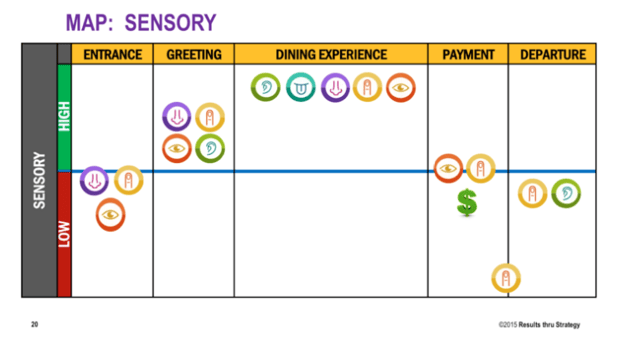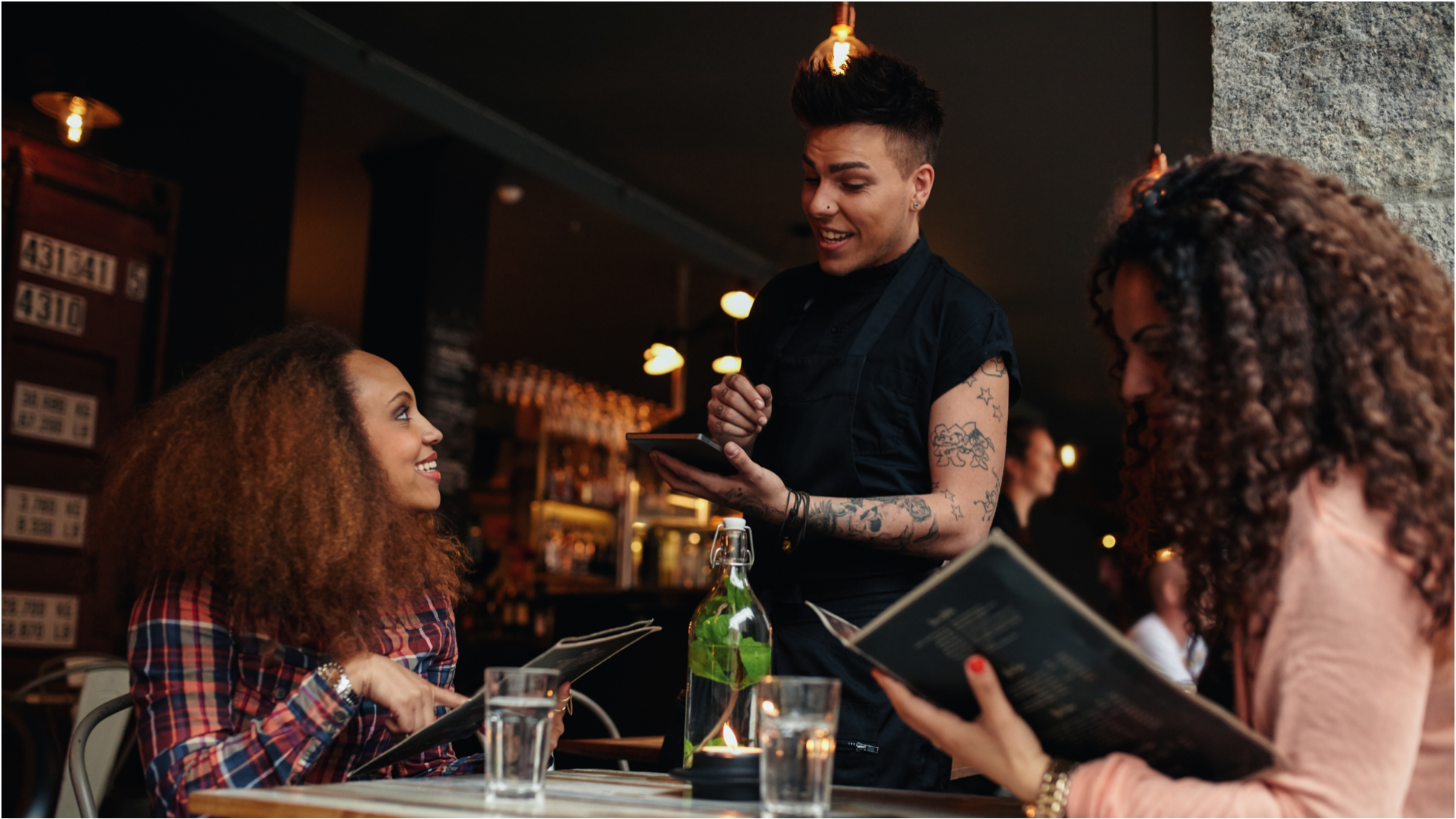Welcome to the intersection of brain science and marketing, a combination that you were probably not thinking about with all the stress of opening your restaurant. Now that you're running things with the efficiency of Amazon (we can all have goals), it's time to talk about how you can harness the power of the brain to influence your customers. Your brain is a powerful tool taking in all types of visual, audible, and tangible queues that help shape our perception of something.
In a brick and mortar environment, your opportunity to harness these queues is great. All it takes is a little understanding of what makes people tick and react. Here is a great diagram by Results Thru Strategy which outlines the senses that are heightened during specific points in your dining experience:

Sound, sight, touch, taste, and smell are the senses that make up a successful dining experience. It's possible to harness these senses to affect your customer's perception of your restaurant. A study done for Cheetos found that consumers responded favorably to the fact that eating Cheetos turns their fingers orange with residual cheese. This proves the "experience" of eating Cheetos is part of what makes the snack appeal to consumers. Another example is restaurants that use decoy pricing on their menus. This is the act of placing an exceptionally high-priced item centrally in their menu design. It is done purposely to deter diners from ordering this item and pushes them to focus more on the (presumably) less expensive other items on the menu.
But what about sound? How does hearing a specific thing change your perception while dining?
The Power of Sound
High Frequency vs. Low Frequency
Did you know that the sounds you're hearing while dining are affecting the way you perceive your food to taste? It's proven that food tastes sweeter in the audience of high-frequency sound and more bitter while in the company of low frequency sound. What are you playing over your speakers? Have you experimented with how it could be affecting the taste of the food you have worked so hard to create?
Noise Level
Another factor that is influencing your diners is the overall noise level in your restaurant. A study done with a dozen popular restaurants in LA found that most restaurants were operating at a decibel level of nearly 90. To put that into perspective, the noise level of a lawn mower running right next to you would produce that same decibel level. Normal conversation runs at a decibel level of about 60 - 65. Experts say long-term exposure to noise at 80 to 85 decibels can cause hearing damage, putting you and your staff in danger. Loud decibel levels like this are usually the result of open kitchens, high ceilings, hard surfaces, and no sound-absorbing material installed. Loud noise levels cause another issue called, The Lombard Effect, which is something that happens when you raise your voice to compete with those next to you, steadily increasing the noise level.
Texture of Food
A third factor that makes a big difference in your dining experience is actually the way eating your food sounds. For example, if we take Cheetos again, and you were to eat two Cheetos: one that was extra crunchy and one that wasn't quite as crunchy, which one do you think you would like better? I'm sure most people would choose the crunchy one, but why? They both taste the same, however, your brain emphasizes taste through the sound that occurs when you bite down on something crunchy.
Pace of Music
How about the speed of sound? Research says the speed at which your music is playing can make a difference in a number of factors important to your business. Want your customers to stay longer and increase their check size? Better play music at a slow, steady pace. Want faster table turnover? It's better to play music at a much faster pace.
There are so many things to consider when it comes to sound in your restaurant. Monitoring the decibel level of your restaurant at peak hours and installing sound-absorbing material, will help immensely. Paying attention to the music you are playing in your restaurant is also effective. Is it affecting the way your food tastes? Are customers lingering a bit longer because of it?
Interested in developing a new sound for your restaurant or bar? Try Rockbot's music for business solution which allows you to control the environment you're creating.







